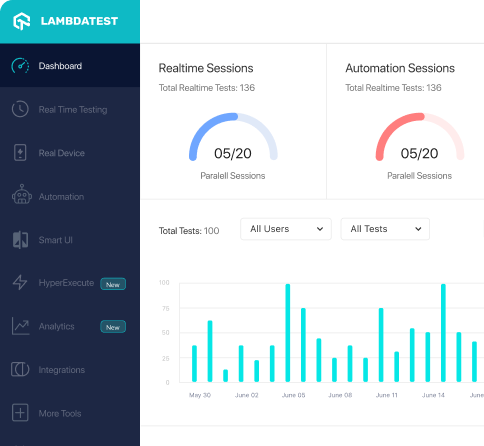How to use GetAnnotationTest class of samples.powermockito.junit4.getannotation package
Best Powermock code snippet using samples.powermockito.junit4.getannotation.GetAnnotationTest
Source: GetAnnotationTest.java
...29 * @see <a href="https://github.com/jayway/powermock/issues/676">Issue 676</a>30 */31@RunWith(PowerMockRunner.class)32@PrepareForTest(AnnotatedClassDemo.class)33public class GetAnnotationTest {34 @Before35 public void setUp() {36 mockStatic(AnnotatedClassDemo.class);37 when(AnnotatedClassDemo.staticMethod()).thenReturn(true);38 }39 @Test40 public void getClassAnnotationsReturnActualAnnotationsByDefault() throws Exception {41 assertTrue(AnnotatedClassDemo.class.isAnnotationPresent(RuntimeAnnotation.class));42 assertNotNull(AnnotatedClassDemo.class.getAnnotation(RuntimeAnnotation.class));43 assertTrue(AnnotatedClassDemo.staticMethod());44 }45 @Test46 public void nonExistingAnnotationsAreNotReturnedByDefault() throws Exception {47 assertFalse(AnnotatedClassDemo.class.isAnnotationPresent(Deprecated.class));...GetAnnotationTest
Using AI Code Generation
1package samples.powermockito.junit4.getannotation;2import java.lang.annotation.ElementType;3import java.lang.annotation.Retention;4import java.lang.annotation.RetentionPolicy;5import java.lang.annotation.Target;6import java.lang.reflect.Method;7import org.junit.Test;8import org.junit.runner.RunWith;9import org.powermock.core.classloader.annotations.PrepareForTest;10import org.powermock.modules.junit4.PowerMockRunner;11import static org.powermock.api.mockito.PowerMockito.*;12@RunWith(PowerMockRunner.class)13@PrepareForTest(MyClass.class)14public class GetAnnotationTest {15 public void annotatedMethod() {16 }17 public void shouldGetAnnotation() throws Exception {18 MyClass myClass = mock(MyClass.class);19 Method method = MyClass.class.getDeclaredMethod("annotatedMethod");20 when(myClass, "annotatedMethod").withNoArguments().thenReturn("foo");21 MyAnnotation annotation = method.getAnnotation(MyAnnotation.class);22 System.out.println(annotation);23 }24}25@Retention(RetentionPolicy.RUNTIME)26@Target(ElementType.METHOD)27@interface MyAnnotation {28}29class MyClass {30 public String annotatedMethod() {31 return "bar";32 }33}34@samples.powermockito.junit4.getannotation.MyAnnotation()GetAnnotationTest
Using AI Code Generation
1package samples.powermockito.junit4.getannotation;2import static org.junit.Assert.assertEquals;3import static org.powermock.api.mockito.PowerMockito.mock;4import static org.powermock.api.mockito.PowerMockito.when;5import java.lang.annotation.Annotation;6import org.junit.Test;7import org.junit.runner.RunWith;8import org.powermock.core.classloader.annotations.PrepareForTest;9import org.powermock.modules.junit4.PowerMockRunner;10@RunWith(PowerMockRunner.class)11@PrepareForTest({ GetAnnotationTest.class })12public class GetAnnotationTest {13 public void testGetAnnotation() throws Exception {14 Annotation annotation = mock(Annotation.class);15 when(annotation.annotationType()).thenReturn((Class) MyAnnotation.class);16 when(annotation.toString()).thenReturn("MyAnnotation");17 GetAnnotationTest test = mock(GetAnnotationTest.class);18 when(test.getClass().getAnnotation(MyAnnotation.class)).thenReturn(annotation);19 MyAnnotation myAnnotation = test.getClass().getAnnotation(MyAnnotation.class);20 assertEquals("MyAnnotation", myAnnotation.toString());21 }22}23The PowerMockito.mock() method is used to create a mock object. It takes the class whose method you wantGetAnnotationTest
Using AI Code Generation
1@RunWith(PowerMockRunner.class)2@PrepareForTest(GetAnnotation.class)3public class GetAnnotationTest {4 public void shouldGetAnnotation() throws Exception {5 GetAnnotation getAnnotation = PowerMockito.mock(GetAnnotation.class);6 PowerMockito.doReturn("test").when(getAnnotation).test();7 Assert.assertEquals("test", getAnnotation.test());8 Assert.assertTrue(getAnnotation.getClass().getMethod("test").isAnnotationPresent(MyAnnotation.class));9 }10}11package samples.powermockito.junit4.getannotation;12public class GetAnnotation {13 public String test() {14 return "test";15 }16}17package samples.powermockito.junit4.getannotation;18import java.lang.annotation.Retention;19import java.lang.annotation.RetentionPolicy;20@Retention(RetentionPolicy.RUNTIME)21public @interface MyAnnotation {22}23 at org.junit.Assert.assertThat(Assert.java:780)24 at org.junit.Assert.assertThat(Assert.java:738)25 at samples.powermockito.junit4.getannotation.GetAnnotationTest.shouldGetAnnotation(GetAnnotationTest.java:21)26 at org.junit.Assert.assertThat(Assert.java:780)27 at org.junit.Assert.assertThat(Assert.java:738)28 at samples.powermockito.junit4.getannotation.GetAnnotationTest.shouldGetAnnotation(GetAnnotationTest.java:21)Blogs
Check out the latest blogs from LambdaTest on this topic:
Unit and functional testing are the prime ways of verifying the JavaScript code quality. However, a host of tools are available that can also check code before or during its execution in order to test its quality and adherence to coding standards. With each tool having its unique features and advantages contributing to its testing capabilities, you can use the tool that best suits your need for performing JavaScript testing.
I was once asked at a testing summit, “How do you manage a QA team using scrum?” After some consideration, I realized it would make a good article, so here I am. Understand that the idea behind developing software in a scrum environment is for development teams to self-organize.
Estimates are critical if you want to be successful with projects. If you begin with a bad estimating approach, the project will almost certainly fail. To produce a much more promising estimate, direct each estimation-process issue toward a repeatable standard process. A smart approach reduces the degree of uncertainty. When dealing with presales phases, having the most precise estimation findings can assist you to deal with the project plan. This also helps the process to function more successfully, especially when faced with tight schedules and the danger of deviation.
Technical debt was originally defined as code restructuring, but in today’s fast-paced software delivery environment, it has evolved. Technical debt may be anything that the software development team puts off for later, such as ineffective code, unfixed defects, lacking unit tests, excessive manual tests, or missing automated tests. And, like financial debt, it is challenging to pay back.
Development practices are constantly changing and as testers, we need to embrace change. One of the changes that we can experience is the move from monthly or quarterly releases to continuous delivery or continuous deployment. This move to continuous delivery or deployment offers testers the chance to learn new skills.
Automation Testing Tutorials
Learn to execute automation testing from scratch with LambdaTest Learning Hub. Right from setting up the prerequisites to run your first automation test, to following best practices and diving deeper into advanced test scenarios. LambdaTest Learning Hubs compile a list of step-by-step guides to help you be proficient with different test automation frameworks i.e. Selenium, Cypress, TestNG etc.
LambdaTest Learning Hubs:
- JUnit Tutorial
- TestNG Tutorial
- Webdriver Tutorial
- WebDriverIO Tutorial
- Protractor Tutorial
- Selenium 4 Tutorial
- Jenkins Tutorial
- NUnit Tutorial
- Jest Tutorial
- Playwright Tutorial
- Cypress Tutorial
- PyTest Tutorial
YouTube
You could also refer to video tutorials over LambdaTest YouTube channel to get step by step demonstration from industry experts.
Most used methods in GetAnnotationTest
Try LambdaTest Now !!
Get 100 minutes of automation test minutes FREE!!



